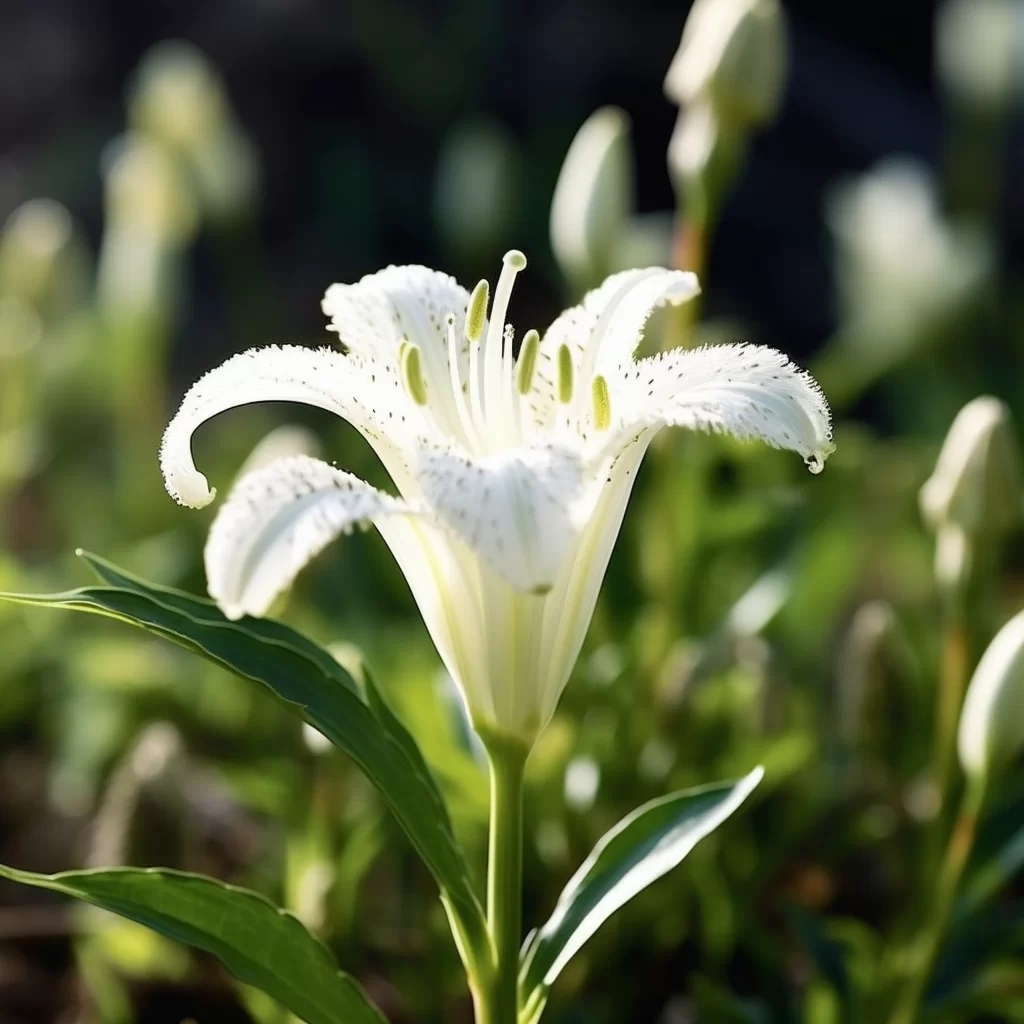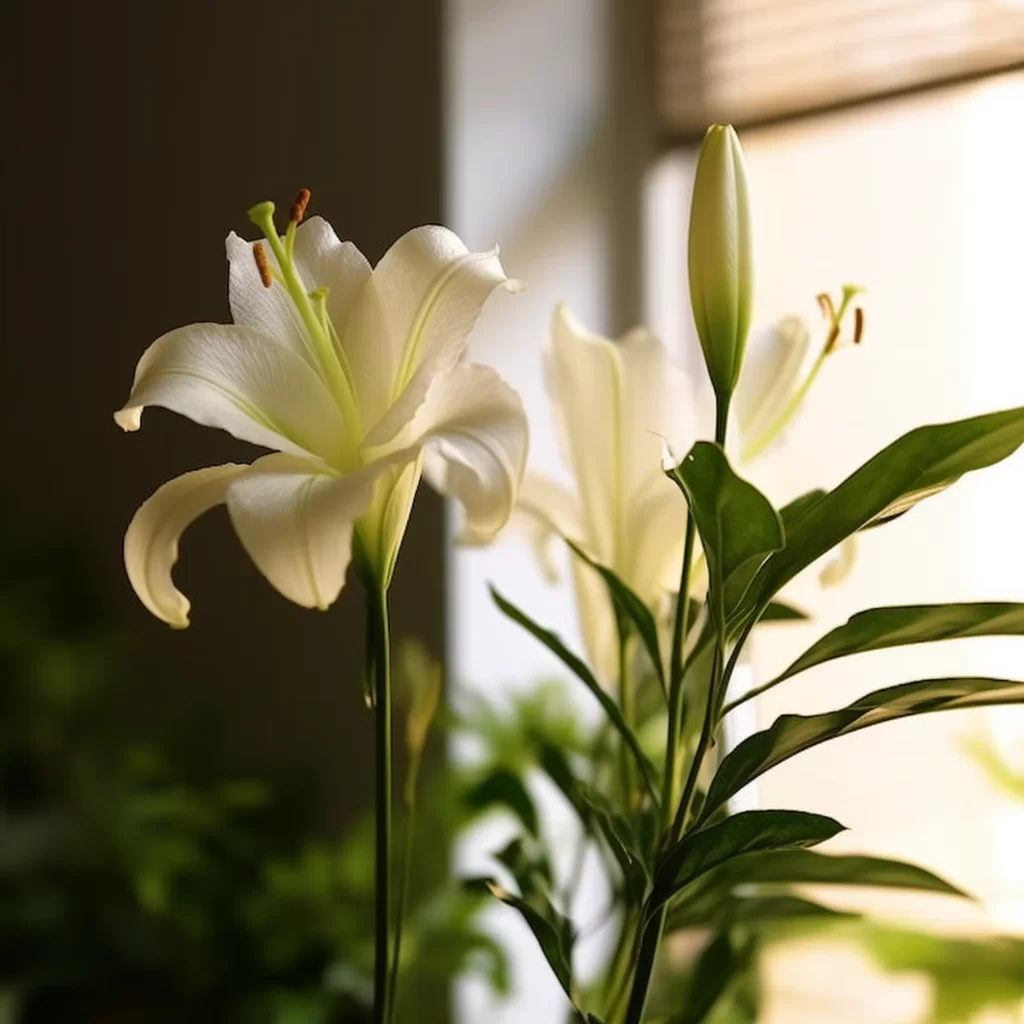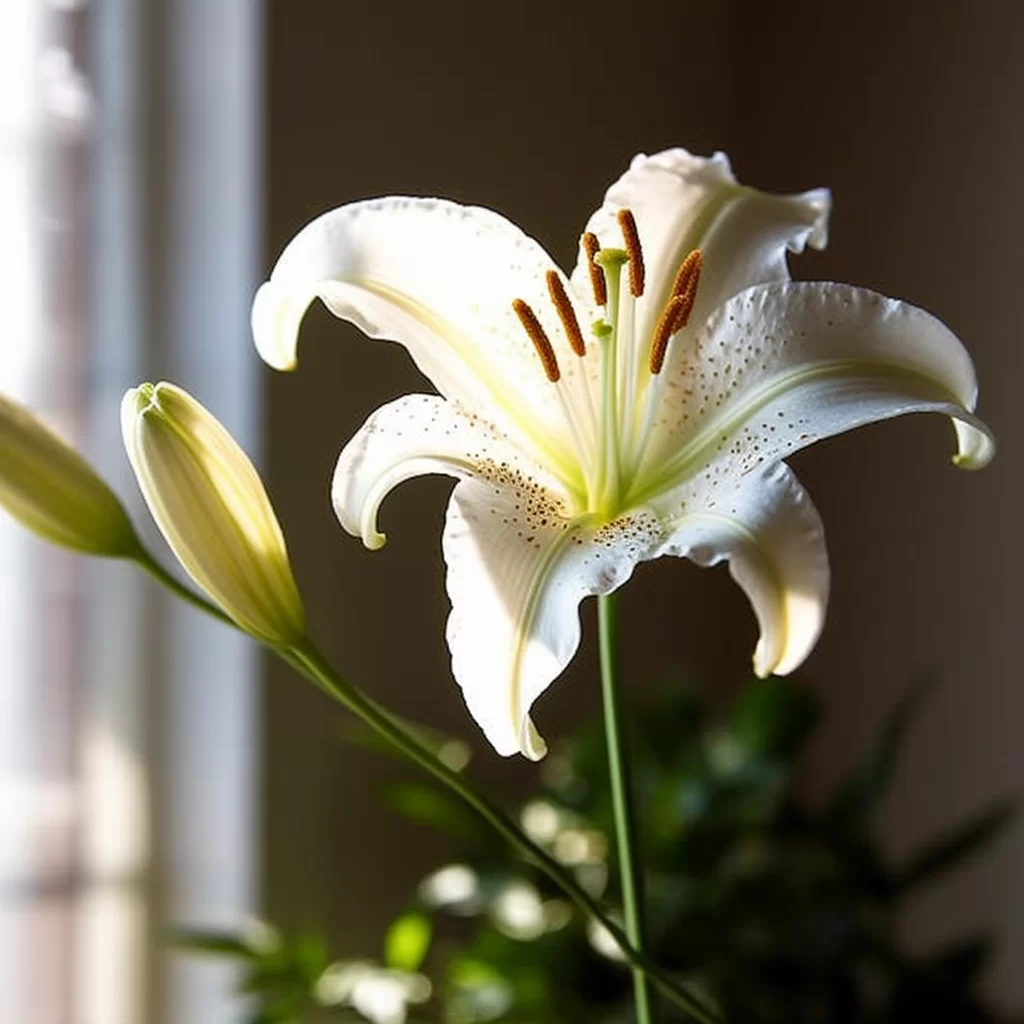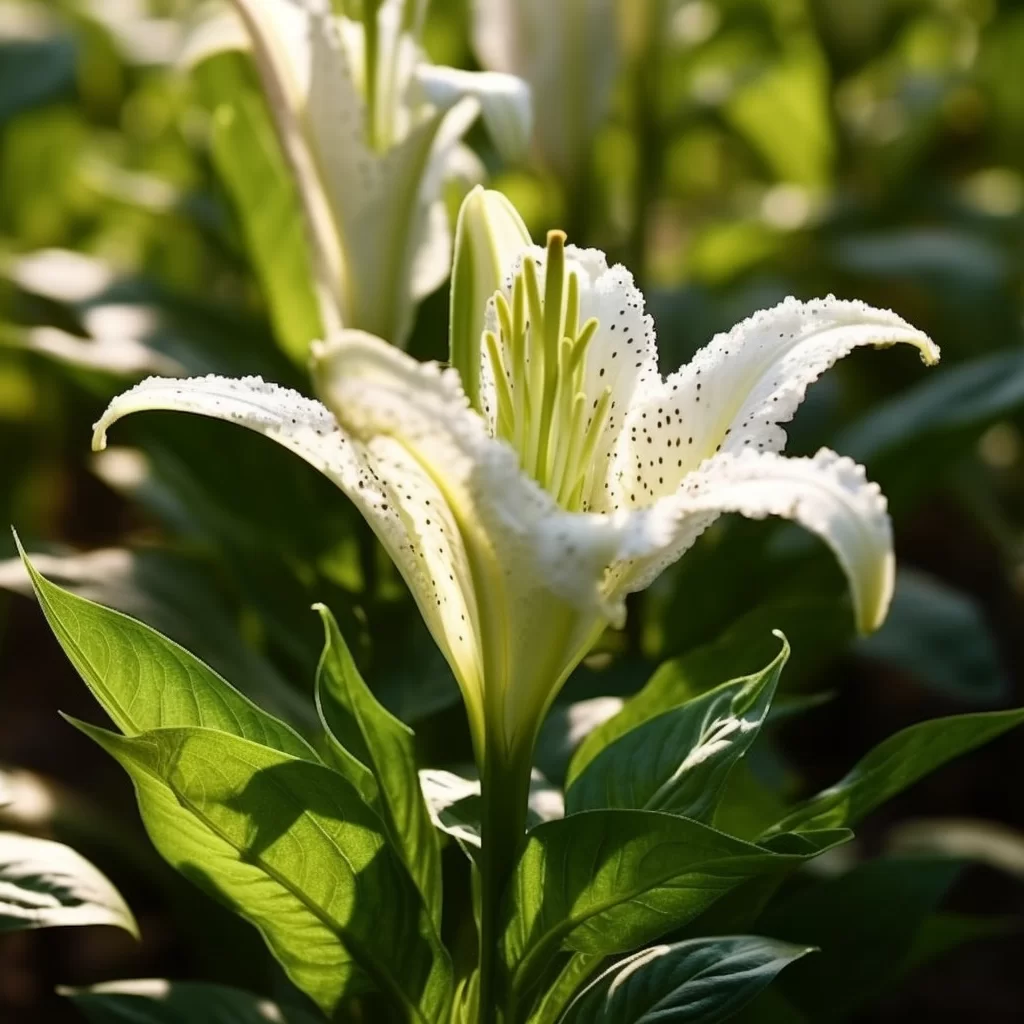Story of Day :
Contents
A Complete Guide to Growing and Caring for White Lily Plants
White lilies are a stunning and sophisticated addition to any garden.
With their pristine white petals and delightful scent, it’s no wonder that they are a firm favorite among garden enthusiasts.
However, if you’re not sure how to properly maintain these plants, caring for them can be quite difficult.
Fear not though! We’ve got you covered with an all-encompassing guide on everything you need to know about white lilies – from planting techniques to top-notch care tips.Whether you’re a seasoned gardener or just starting out, growing white lilies can be challenging without the right knowledge.
Luckily for you, this comprehensive guide will teach you everything there is to know about cultivating these beautiful flowers in your own backyard.
With tips and tricks on planting and nurturing your blooms carefully, get ready for thriving white lilies that will add elegance and charm to your outdoor space all season long!
Planting White Lilies
If you are a gardening enthusiast and want to grow white lilies, it is crucial to find the perfect spot for them.
White lilies thrive in well-drained soil that receives ample sunlight.
Therefore, ensure that you plant them in an area that gets at least six hours of sunlight each day.
Moreover, the soil should be rich in nutrients such as compost or organic matter.
This will help your white lilies grow healthy roots and produce vibrant blooms. To achieve optimal growth conditions for your white lilies, it’s important to remember a few essential tips.
To achieve optimal growth conditions for your white lilies, it’s important to remember a few essential tips.
Firstly, avoid planting them in areas with poor drainage as this can lead to root rot and other fungal diseases.
Secondly, protect your lilies from strong winds as they can damage delicate petals and stems or even uproot the entire plant.
Finally, if you live in an area with hot summers or cold winters, ensure that you cover your plants appropriately during extreme weather conditions to protect them from frost or heat stress.
Following these simple tips will help create a suitable environment for your white lilies to flourish all year round!
- Choose a location with well-draining soil.
- Select an area that gets full sunlight or partial shade.
- Ensure adequate spacing between each bulb (about 6-8 inches apart).
If you’re planning to plant bulbs, it’s important to know when the best time is for planting.
Fall is the most ideal season for planting bulbs as it allows them enough time to take root and get established before they bloom in the spring.
With cooler temperatures and moist soil, fall creates perfect growing conditions for these plants.
By planting your bulbs during this season, you’ll ensure that they have a greater chance of thriving once spring arrives.Planting bulbs in fall has become a popular practice among gardeners because it sets up their garden for success in the long term.
Bulbs allow gardeners to prepare their gardens ahead of time with little maintenance throughout winter and early spring.
Additionally, planting these bulbs during fall saves you money since they usually come at discounted prices compared to peak seasons like spring or summer where demand is high.
By taking note of when you should plant your bulbs, you can ensure that your garden will be full of life once blooming season commences next year!
 Taking care of white lilies can be a rewarding and enjoyable experience.
Taking care of white lilies can be a rewarding and enjoyable experience.
These beautiful flowers require proper maintenance to bloom at their best.
One essential factor in caring for white lilies is the location.
The plants thrive in areas with adequate sunlight, so it’s best to place them near windows or outside areas that receive plenty of natural light.
Adequate watering is also critical to ensuring the health of your white lilies.
It’s crucial to keep the soil moist but avoid overwatering as this may cause root rot.Fertilizing regularly aids in keeping your plant healthy, and it should be done once every two weeks during its growing season using a balanced liquid fertilizer solution.
Additionally, removing dead flowers will promote new growth and prevent fungal infections from spreading within the plant.
Finally, during winter months, you can move your white lilies indoors and ensure they have enough water while waiting for spring when they will again thrive outside in full sun conditions!
If you want to keep your white lily plants healthy and vibrant, there are a few things to consider.
First and foremost, make sure they are planted in well-draining soil with plenty of sunlight.
Lilies prefer moist but not water-logged soil, so be careful not to overwater them.
To promote strong growth and prolific blooming, fertilize your lilies regularly during the growing season with a balanced fertilizer.Another thing you can do is deadhead spent blooms as soon as they fade.
This helps encourage more blooms to form rather than putting energy into seed production.
Also be sure to remove any yellow or damaged leaves promptly as this will help prevent disease from spreading among the plants.
With proper care and attention, your white lily plants should continue producing beautiful blossoms for years to come!

Watering:
Your white lily plants require regular watering throughout their growth period but avoid overwatering as it may lead the bulbs rotting down .
Provide enough water so that soil stays moist / damp but not waterlogged
Fertilizing:
Add fertilizer once per month during growing season or use slow release fertilizer pellets in early spring with an N-P-K ratio of about(10-10-10)or (5-10-5)to promote healthy growth and blooming.
Deadheading:
Remove faded blooms regularly to prevent the plant from using up its energy producing seeds and rather direct it into growing more flowers.
Pest control:
White lilies are not commonly affected by pests but some like aphids, snails or slugs pose potential threats.
You can use neem oil or insecticidal soap solution.
 In summary, the conclusion is a crucial part of any piece of writing or research.
In summary, the conclusion is a crucial part of any piece of writing or research.
It provides a final opportunity for the writer to leave a lasting impression on their audience and reinforce their main points.
The conclusion should be concise but impactful, reiterating the central thesis and summarizing key findings or arguments.
Additionally, it is an excellent space to suggest further research and open up new questions or ideas that have been raised throughout the work.Overall, crafting a strong conclusion requires careful consideration and attention to detail.
As readers often remember the last thing they read most vividly, it is essential to leave them with a lasting impression that reinforces your message.
Whether working on an academic paper or personal essay, taking ample time to reflect on your central thesis and how best to communicate its significance can make all the difference in delivering an effective conclusion that resonates with your audience long after they finish reading.
White lilies are a stunning addition to any garden thanks to their graceful and delicate blooms.
If you’re interested in cultivating these beautiful flowers, don’t be intimidated! With a little bit of know-how and care, growing white lilies can be an easy and enjoyable experience.
By following some basic tips on planting and maintenance, you’ll ensure that your lilies thrive and produce breathtaking blossoms year after year.
Not only will they bring elegance to your garden space, but they’ll also provide a delightful fragrance that will enchant visitors.To start growing white lilies successfully, it’s important to make sure you plant them in the right conditions.
Lilies prefer rich soil with good drainage that is consistently moist but not waterlogged.
Make sure they receive plenty of sunlight but avoid planting them in areas where the sun is too harsh or direct.
Once they’re planted, regular maintenance is key to keeping your white lilies thriving.
This includes watering regularly during dry spells or when the top layer of soil feels dry to the touch; fertilizing once a month during the growing season; removing any damaged leaves or stems promptly; and adding mulch around the base of plants for insulation in colder weather.
With attention paid to these simple tasks, you can enjoy beautiful white lily blooms for years to come!